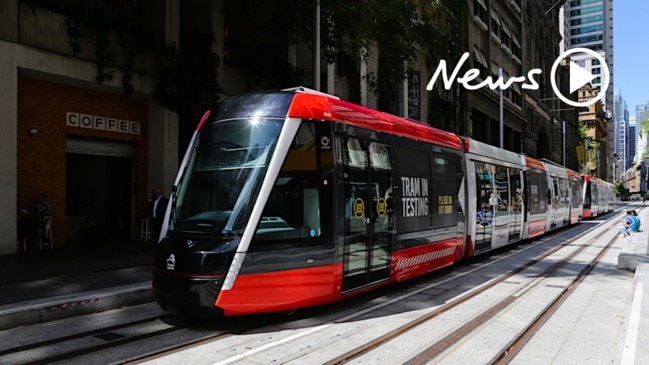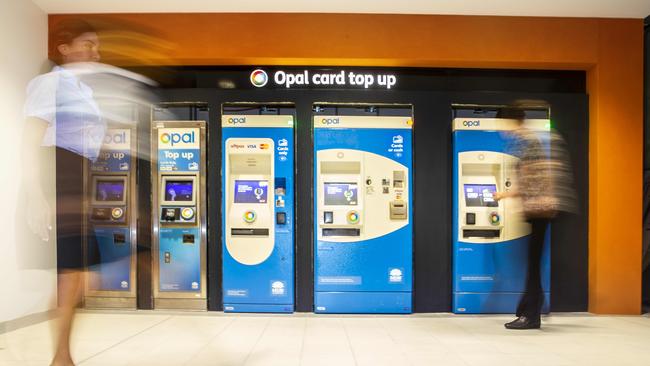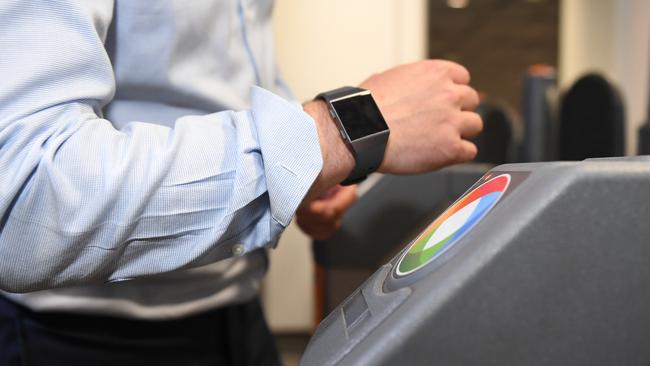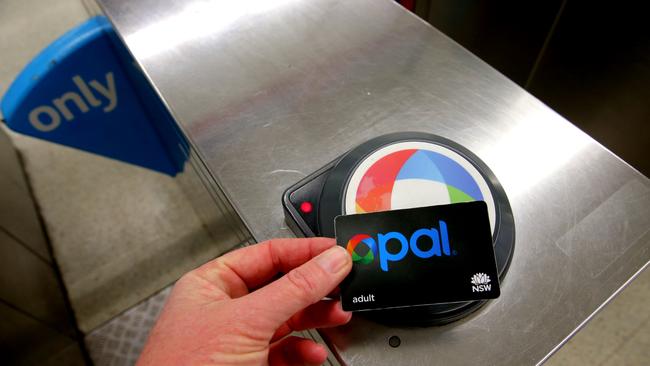NSW pays back more than $250,000 after customers overcharged for contactless payments
Commuters on the country’s biggest public transport network have been overcharged due to one simple change in how they pay fares.

Innovation
Don't miss out on the headlines from Innovation. Followed categories will be added to My News.
Sydney commuters who struggled to take public transport as wild weather impacted services on Monday morning have been dealt another slap in the face after it emerged some of them had been paying too much for months.
The heavy rain that hit Sydney and surrounds over the weekend caused flash flooding, downed trees and led to power outages that created chaos on public transport this morning.
Train stations were severely overcrowded, even by Sydney standards, with delays on the T2, T3, T4 and T8 lines.
RELATED: Transport hell for Sydney commuters
Now it’s been learned that many of the sardine-can commuters cramming their way onto trains and buses every morning were being overcharged for using a new system that was supposed to be more convenient.
Contactless payments that allow you to use your credit or debit card as well as digital wallets like Apple Pay or Google Pay on your smartphone or watch were first trialled on the Manly Ferry in 2017 before being expanded to trains at the end of 2018.
In July last year, the system was changed so that you could get the same lower prices and travel benefits as you would using a regular Opal card as long as you used the same card or device every time.
In September last year, the contactless payment methods were expanded to the rest of the Opal network, including buses and the light rail.
So far more than 30 million contactless payments have been made on the Opal network.

Being able to use your credit card instead of your Opal card means you can have one less card in your wallet (or even get rid of it completely if you embrace the new digital driver’s licence).
It also makes it more convenient for tourists because they can just use the credit card they already have.
But the system isn’t free of issues.
The Nine newspapers reported this morning that Transport for NSW was forced to pay back more than $250,000 to an unknown amount of commuters who were overcharged in the final quarter of last year when $46 million in contactless payments were made on the network.
The overcharging was blamed on “minor issues” that have now been fixed.
Card clashing, caused by storing your Opal card near your credit card in your wallet, has also been blamed.
Paying with a credit card or digital wallet also means you don’t see how much you’ve been charged for a trip like you do when you tap off with an Opal card, meaning you could be charged more than you should have been without realising it.
Transport for NSW said the digital Opal card it planned to trial later this year would have the same problem.

Overcharges can also be caused by using different devices to tap on or off that are treated as separate accounts even if they’re all linked to the same card.
This means if you touched on with your credit card then tapped off with your smartphone you would be charged once for not tapping off on your credit card and again for not tapping on originally with your smartphone if you’re departing at a station with Opal turnstiles.
This is due to Apple Pay and Google Pay creating virtual, device-specific card numbers for your digital wallet so that your actual credit card number isn’t stored on your device or on servers where it could be compromised.
While the department told Nine it “proactively refunds customers’ accounts” when there are glitches or errors with payments, commuters who are overcharged often view it as too much hassle to contest and get a refund.
“I tried to claim a refund when I was overcharged on contactless but it was so difficult I just gave up and never got refunded,” one commuter said in an online post about the issue.
“Just use your Opal card,” warned another. “I got overcharged $12 for a one-way trip … good luck trying to complain to Transport NSW because they don’t care.”

Paying for public transport using a stored value card rather than purchasing a paper ticket is now the norm in many countries around the world after first being introduced in Seoul in 1996.
Last year, the Independent Price and Regulatory Tribunal advised that Opal fares should be raised by 5 per cent every year from 2020 to 2024. It also recommended discounts be provided for frequent travellers and for trips outside the peak periods of 7am-9am and 4pm-6.30pm.
Are you still using your Opal card or have you moved on? Let us know in the comments below.
Originally published as NSW pays back more than $250,000 after customers overcharged for contactless payments
